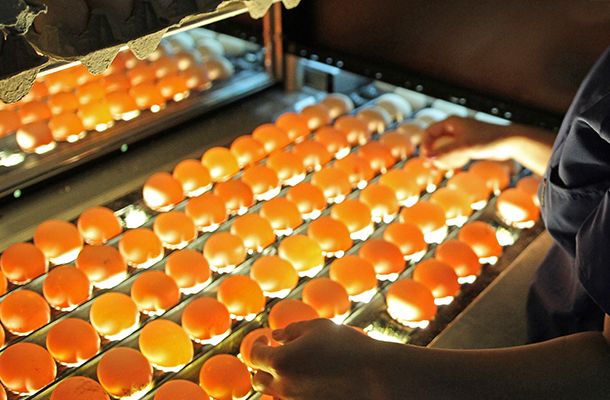Early embryonic mortality
Tags: Egg handling | Whitepaper
, 3 February 2020

The act of fertilisation – which takes place just after ovulation, at the entrance to the oviduct – is the beginning of a new life. From that moment this 'life' has two options: to continue ... or to die.
As the embryo consists of live cells, the same fate applies to them. Cells can keep on dividing and differentiating (to form different organs and tissues), or – if conditions become unfavourable – they may die. At the moment an egg is laid, the embryo already consists of 30-60,000 cells. The death of some of them – for example under extended or suboptimal storage conditions – does not necessarily mean the death of the entire embryo. Well-organised, periodical heat treatments during egg storage can help to rebuild deteriorating structures and prolong the embryo's viability.
Assuming the egg was fertilised, the embryo may die before incubation starts or during that process. A sharp distinction is not always made between these two phases, but this must be done if the cause of the problem is to be identified. A break-out of ‘clears’ can help to answer the question “When did the embryo die: before or during incubation?”
Eggs, whether they hatch in the wild or in captivity, must wait until incubation begins, and during that time the embryos remain in diapause (suspended development).
An embryo is a delicate structure, which is very susceptible to damage. The germ quality is affected by many biological factors including genetics, health status of the breeder flock, nutrition, hygiene, cooling after laying, and stress. Mortality before setting can result from physical impacts such as mechanical shocks, rapid changes in temperature, dehydration, infections and chemicals. Breeder farm related factors such as method and frequency of egg collection, method of egg cooling after oviposition, quality and stability of environment during storage and transport all play a role. Therefore, the hatching egg must be treated as a living, delicate organism. Rough handling, excessive disinfection, rapid and large changes in environmental conditions should be avoided.
The start of incubation is a new challenge. The clear phases of embryo development during the first days of incubation make it possible to accurately pinpoint the moment of mortality. The temperature is actually the only factor that counts at this moment. Cell division and differentiation start at about 82 °F (28 °C). An embryo temperature of above 105 °F (almost 41 °C) – if this lasts for too long – will have a lethal effect. An embryo temperature of about 100 °F (38 °C) is assumed to be optimal.
Early embryonic death, even if it occurs during the first days of incubation, can usually be ascribed to problems before the actual start of incubation. However, thermal conditions during early incubation itself may also play a role, such as an incorrect setpoint, too slow or too fast heating-up or poor uniformity caused by the inconsistent workings of equipment or those operating it.
Advice:
- Treat the hatching eggs as living organisms.
- Analyse the factors that determine egg quality before setting: status of breeder flock, egg collection, disinfection, transport and storage.
- Consider applying a heat treatment and turning during prolonged storage.
- Break out some eggs to check the status of germs before setting. Identify the true infertile eggs.
- To verify the level of fertility and early mortality, check eggs by break-out during the early incubation phase (7-10 days).
- Ensure correct temperature setpoints at start of incubation and keep the machine closed to avoid cold and hot spots forming.
Written by Maciej Kolańczyk
Senior Hatchery Specialist
I welcome your feedback on this article - and if you require any additional information, please don't hesitate to contact me.